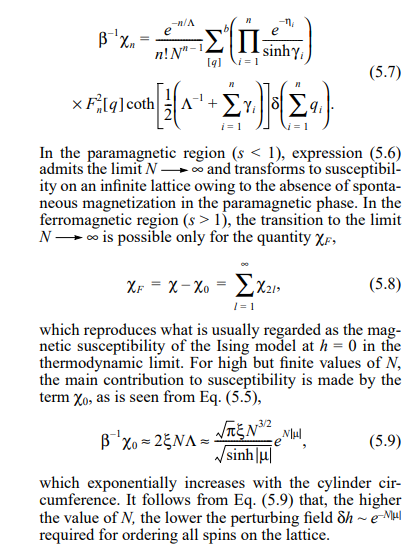The Onsager solution for the 2-D Ising model allows us to find (among other things) complicated expressions for the internal energy of the system (in the thermodynamic limit and in zero magnetic field): $$ u \equiv \frac{U}{JN} = - \coth \frac{2}{t} \left\{ 1 + \frac{2}{\pi} \left[ 2 \tanh^2 \left( \frac{2}{t} \right) - 1 \right] K\!\left[4 \, \text{sech}^2 \left( \frac{2}{t} \right) \tanh^2 \left( \frac{2}{t} \right) \right] \right\} $$ where $t \equiv kT/J$ is the dimensionless temperature and $K(x)$ is a complete elliptic integral of the first kind. We can then (in principle) find a closed-form expression $C = \partial U/\partial T$.
Further, the net mean magnetization is known to be $$ m = \begin{cases} \left[ 1 - \text{csch}^4 (2/t) \right]^{1/8} & t < 2/\ln(1 + \sqrt{2}) \\ 0 & t > 2/\ln(1 + \sqrt{2}) \end{cases} $$ The question is then:
Is there a known closed-form expression for the magnetic susceptibility $\chi$ of the 2-D Ising model at zero field?
My (limited) intuition tells me that there should be, because energy and heat capacity are related to the first and second derivatives of the partition function with respect to $\beta$, and we have closed-form expressions for both of those quantities. Similarly, the magnetization and susceptibility are related to the first and second derivatives of the partition function with respect to the external field—but I have not been able to find a source that discusses a closed-form expression for $\chi$, only for $m$. Am I just looking at the wrong sources, or is there not actually a known expression for $\chi$ at zero field?







